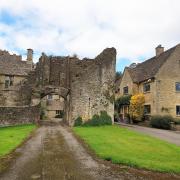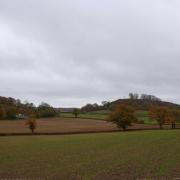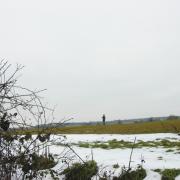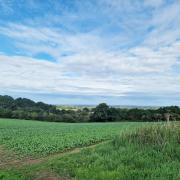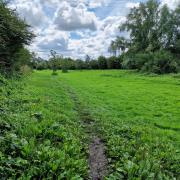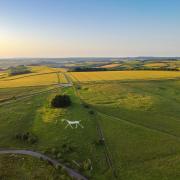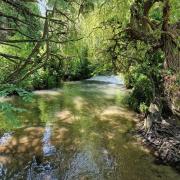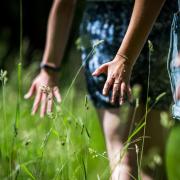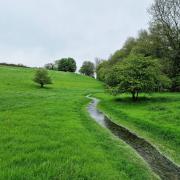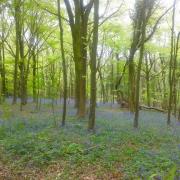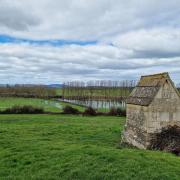A series of strange events led to Chipping Campden’s brief notoriety in the late 17th century. Accusations and convictions of murder gave way to bizarre stories of abduction and witchcraft

It was August 1660. Charles II had been on the throne for four months, but the depredations of the Civil War were writ large on Chipping Campden. Back in the glory days of James I, the manor of Campden had been bought by social climber Sir Baptist Hicks, who built Campden House, complete with banqueting houses, on the grounds next to the parish church. If you look through the gates, you can see the banqueting houses, but no manor house. Only 40 years after it was built, the house ‘that was so faire’ was razed to the ground – on the orders, some say, of the Royalist commander, Prince Rupert of the Rhine – to stop the Parliamentarians taking the house and holding it against the Royalists.

In 1660 the lord of the manor was Lord Baptist Noel, through his mother Juliana, Hicks’s daughter. Though Noel lived in far away Rutland, his estate manager William Harrison lived in one of the banqueting houses. On the fateful day, August 16, Harrison set out to collect rents from nearby Charingworth – and did not return. Worried, his wife Elizabeth sent their servant John Perry out into the night to look for him. Perry didn’t come back either.
The next day, Harrison’s son Edward went to look for his father. He met John Perry on the path from Charingworth, a few miles from Campden. Perry said he’d found no sign of his master, but, as they made their way back, word came that something had been found near Ebrington. Perry and Edward exchanged glances with each other; Ebrington folk had a reputation for foolishness. The two hiked down the hill towards the village. But on the Campden road they met a woman waiting for them with what she’d found – a hat, a collar, and a comb. Edward recognised them as his father’s. When he turned them over, he saw that the hat was slashed and the collar covered in blood.


The parishes of Campden and Ebrington scrambled to search for Harrison’s body. To no avail. If it was murder, where was the body? If it wasn’t, then what had happened? Suspicion fell on John Perry. He told a rambling tale of wandering about between Harrison’s home and Charingworth in the darkness and the moonlight, but it wasn’t enough to clear him. He told other tales to friends: a tinker had killed Harrison – no, not a tinker, it was a gentleman’s servant who’d robbed him and left him for dead – no, his body had been slung in a beanrick – and so on …

Then the Justice of the Peace extracted a darker confession: it was, John Perry said, his mother Joan and brother Richard who’d murdered Harrison. The two brothers had met that day on Campden High Street and cooked up a plan to rob John’s master. In the evening, as Harrison made his way back across the Coneygree, the rabbit warren on the edge of the manor’s land, his usual shortcut, Richard and Joan ambushed him. When John arrived, Harrison was still alive, crying, ‘Ah, rogues, will you kill me?’ Despite John’s protestations, so he said, Richard strangled Harrison. John then took the hat, comb, and collar up to the Ebrington road while Richard dumped the body in a cesspool.

It was a complex tale. Hard to prove one way or another, since there was still no body. The cesspool, the fishponds, and, for good measure, the ruins of Campden House were all searched, but nothing was found. Richard Perry and his mother Joan swore their innocence, but John swore their guilt. A black mark was noted against Richard when two of his children suddenly had nosebleeds after he’d lifted them up. Harrison had been robbed of £140 the year before and, a few months after that, John Perry had said, he himself had been accosted by two men with swords outside Harrison’s house. He’d showed his sheep pick, all cut about, to prove it. He now said that he’d lied about that and that it was Richard who’d robbed Harrison the previous year.
The case dragged on for a year. By the time of the trial at the assizes, John was getting cold feet. He said he was mad and that everything he’d said before was lies. Richard and Joan maintained they were innocent. No one believed them. In the end, all three were indicted for murder and robbery. They were hanged on Broadway Hill, where Broadway Tower now stands. People said that Joan was a witch, that she’d bewitched her sons so they couldn’t tell the truth until she was dead. They hanged her first, just in case.
But nothing the brothers said swayed the crowd or the executioners. Richard went to his death protesting his innocence. John, just before his execution, said he knew nothing of his master’s death – but might find out ‘afterwards’. Was the truth to be revealed to him in the afterlife? Joan and Richard were buried, but John was gibbeted on the hill as a warning to others. And that, you might think, would be the end of it. Two families wrecked and ruined. But still there was no body to prove that Harrison had been murdered.

A year later comes the twist in our tale. William Harrison reappeared in Campden – he was alive! He came telling a marvellous tale of abduction and slavery. His version of that fateful August night two years before went like this. In order to collect more rents, he said, he’d had to wait until the evening because everyone was in the fields, it being harvest time. On his way back to Campden, in a spot overgrown with gorse, he’d been set upon by men with swords. They had wounded him, tied him up, carried him away, and robbed him of the £23 of rents he was carrying. Then he was taken to Deal in Kent and – in fear of his life and with no idea of his fate – put on a ship.

Now his adventures truly began. After six weeks under sail, the ship was sighted by three Turkish vessels. Although still recovering from his wounds, Harrison said, he was prepared to fight alongside the crew. But instead he was transferred to one of the Turkish ships and transported to Smyrna (now Ízmir), in Turkey, where he was enslaved to a doctor. This doctor gave him a silver gilt bowl, and with this Harrison bought his freedom when his master died. He embarked on a Portuguese vessel bound for Lisbon and thence came home.
It was a wonder! But what of the three who’d been unjustly hanged? John Perry’s body was taken down from the gibbet where it had been hanging in chains, and quietly buried. Elizabeth, Harrison’s wife, fell into depression and, shortly after his return, hanged herself in the banqueting house where they lived. What on earth had happened? Was Harrison truly abducted? If not, where had he been – and why? Had he engineered his disappearance to evade the consequences of his own financial misdemeanours? Or was it Lady Juliana’s family who got him out of the way because of awkward questions from the King’s Commissioners about the destruction of Campden House? And the biggest question of all: why did John Perry tell such lies that sent him and his mother and brother to the gallows? None of these questions has ever been answered. We worry about fake news in our own time, but this story shows that it troubled the past as well – and could have equally grim consequences.

ESSENTIALS
Parking: Road parking in Chipping Campden.
Toilets and refreshments: Many eateries in Chipping Campden; the Ebrington Arms in Ebrington
Transport links: You can reach Campden by bus from Stratford-upon-Avon, Moreton-in-Marsh, and Cheltenham.
Map: OS Outdoor Leisure 45: The Cotswolds.
Further reading: Folklore and Mysteries of the Cotswolds, by Mark Turner; The Campden Wonder, edited by Sir George Clark.

LINKS
The Campden Wonder: campdenwonder.plus.com
Landmark Trust: You can stay in the banqueting houses that flanked Campden House, landmarktrust.org.uk
Kirsty Hartsiotis and Anthony Nanson are based in Stroud and available for hire as storytellers and speakers. Their books include Gloucestershire Folk Tales, Wiltshire Folk Tales, Gloucestershire Ghost Tales, and Gloucestershire Folk Tales for Children. Kirsty is also the curator of decorative and fine art at a Gloucestershire museum. Anthony runs the small press Awen Publications.






